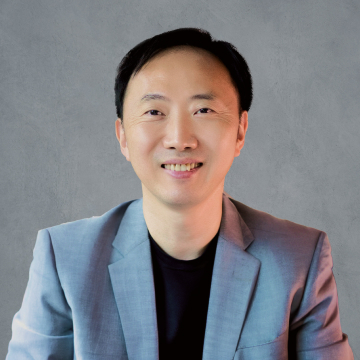Refusal of Unauthorized E-Mail Collection
using an e-mail collection program or other technical devices.
Violators may be punished in accordance with the Act on Promotion of Information
and Communications Network Utilization and Information Protection, Etc
Pioneering Disease Diagnosis and Treatment Research
with a Library of 10,000 Fluorescent Molecules

-
Affiliation
POSTECH Department of Chemistry
-
E-Mail
ytchang@postech.ac.kr
- Homepage
Award-winning achievements
Professor Youngtae-Chang has made a significant contribution to the field of chemical genetics by innovatively introducing the 'Linked Library' concept to address the long-standing challenge of 'identifying target proteins of bioactive molecules.' This approach has dramatically accelerated the pace of target protein identification, significantly advancing the relevant academic field.
Moreover, Professor Chang has implemented a 'Fluorescent Molecular Library'—which, like antibodies, possesses diversity yet inherently exhibits fluorescence—in complex systems such as living cells. He has systematically constructed the world's first library of over 10,000 fluorescent molecules. This library serves as a foundation for developing sensors that detect properties such as toxicity, drugs, and lipid peroxidation. These sensors have been used as probes to differentiate between various tissue cells and cancer cells within the body. Through this, he has developed fluorescent materials that specifically track cancer stem cells, steering the progress in chemical cell biology. His research on selective probes against the toxic A-beta oligomers in Alzheimer's disease has garnered attention, with publications in top-tier chemistry journals such as JACS.
Professor Chang has further advanced his previous work on fluorescent sensors and probes to build a platform capable of systematically analyzing more complex and faster cellular systems. He is currently focusing on clarifying the tumor microenvironment. His research outcomes have been published in more than 400 papers in prestigious international journals and registered in over 60 domestic and international patents. Recently, he has encapsulated his lifelong research in the book "Sensors and Probes for Bioimaging," published through one of the world's leading science publishers, Wiley-VCH.
He continues to exert substantial influence as a current editorial board member for several international academic journals and has been invited to the advisory board of Angewandte Chemie. He stands as a top-tier researcher, elevating the stature of the South Korean scientific community.
Education and career
- 1987 ~ 1991 B.S in Chemistry, POSTECH
- 1993 ~ 1995 M.S in Chemistry, POSTECH
- 1995 ~ 1997 Ph.D. in Chemistry, POSTECH
- 2005 ~ 2007 Associate Professor, Department of Chemistry, New York University
- 2012 ~ 2017 Professor, Department of Chemistry, National University of Singapore
- 2017 ~ Deputy Director, Complex Systems and Self-assembly Research Team, Institute for Basic Science
- 2017 ~ Professor, Department of Chemistry, POSTECH